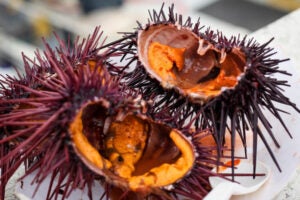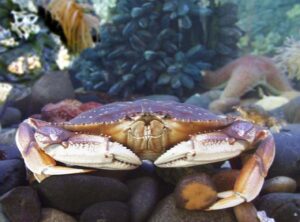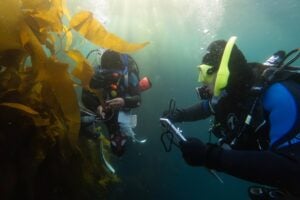The marine rocky intertidal is one of the most variable environments with respect to the prevailing abiotic factors. Depending on the particular tidal and climatic conditions, inhabitants can be submerged in cool seawater part of their day, but then suffer heat and desiccation stress during aerial exposure on sunny afternoon low tides. Intertidal organisms have evolved unique capabilities to survive in these variable and unpredictable conditions. Our lab is actively investigating the molecular responses of intertidal organisms to multiple stressors with long-term exposure experiments utilizing next-generation sequencing and bioinformatics to identify alterations in gene expression which result in phenotypic variation.

Mussels
We have constructed an encyclopedia of cDNAs for the California mussel Mytilus californianus. The DOE’s Joint Genome Institute is sequencing these cDNAs as a collaboration in the 2006 Community Sequencing Project. We curated a set of 15,000 non-redundant cDNAs from gill and adductor muscle tissue. This represents a significant proportion of the transcriptome, and will open the way to functional genomics investigations of adaptive responses. We are particularly interested in understanding the mechanisms that underpin short-term or dynamic adaptations which are manifest over an hourly, tidal, or diurnal timescale.
Mussels are an important organism for ecotoxicological monitoring, and our cDNA collection is being probed to identify biomarkers for a range important pollutants such as heavy metals and polyaromatic hydrocarbons.
Our lab is also actively investigating the genomics and domestication potential of mussels artificially selected for resilience to a variety of environmental pressures, most notably ocean acidification, which is an urgent threat to intertidal organisms in Southern California.

Oysters
Oysters comprise a large industry both globally and across the United States. However, their calcium carbonate shell renders them susceptible to pressures such as ocean acidification, marine heatwave events, and anthropogenic pollution. We are researching the effects of these environmental conditions on the gene expression of a variety of local oyster species, and in addition are conducting studies to better characterize the genomics of oyster species and their use in selected breeding and domestication programs.

Sea Urchins
Red sea urchins are major ecosystem engineers in the Northeast Pacific that substantially alter the intertidal and subtidal rocky environments they reside in by controlling algal abundance. They are commercially harvested for their gonads, making them a valuable source of income for fisheries. They also serve as developmental models in research due to their rapid external growth and optical transparency that allows for detailed observation. Ocean acidification and hypoxia have become increasingly widespread and severe along the California coast. We are investigating the potentially interactive effects of these co-occurring stressors and how they impact the gene expression and morphology of the red sea urchin.

Dungeness Crab

Giant Kelp
Giant kelp is an ecologically and economically significant species. It grows in huge underwater forests valued for ecotourism; a variety of extractive products used in pharmaceutical, biomedical, and commercial products; shoreline protection; nutrient biogeochemical cycling; and its function as a biodiverse ecosystem home to many fisheries. Kelp’s fast growth, relatively low input requirements (i.e. no fresh water, no nutrient fertilization) and bioremediative services– primary among which is carbon and excess nutrient capture– position giant kelp as a promising crop on many fronts including sustainability.

Sunflower Sea Stars
Sunflower sea stars are key predators of sea urchins, herbivores grazing on kelp. Following a viral disease outbreak exacerbated by climate-induced increases in susceptibility, the sunflower sea star population crashed, leading to a boom in sea urchin populations which razed down kelp forests. We aim to establish guidelines for the captive breeding and “priming” of sunflower sea stars for the restoration of resilient populations through the use of molecularly-informed programs and control over sensitive life stages in order to improve restoration success for populations decimated by anthropogenic disturbance and climate change.
